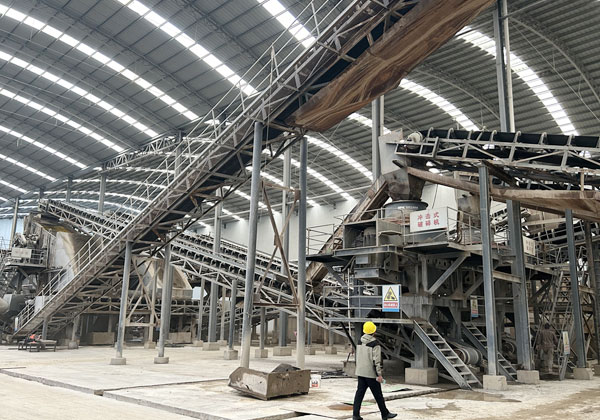mineral processing plant of rock
A mineral processing plant is an industrial facility designed to extract valuable minerals from raw ore or rock. The primary goal of a mineral processing plant is to separate valuable minerals from waste materials, ensuring that the extracted minerals can be further refined or utilized. This process typically involves various stages such as crushing, grinding, classification, flotation, and filtration, depending on the type of mineral and its characteristics. The plant’s design and operation are highly dependent on the nature of the rock being processed and the intended final product.
The first stage in a mineral processing plant is usually crushing, where large rocks are broken down into smaller, more manageable sizes. This is achieved through the use of crushers such as jaw crushers, cone crushers, or impact crushers. The goal of this stage is to reduce the size of the ore so that the valuable minerals are exposed and can be more effectively separated in subsequent stages. Crushing also plays a crucial role in the efficiency of the entire processing plant, as it sets the foundation for all subsequent processes.

After crushing, the next step is grinding, which further reduces the size of the ore to a fine powder. Grinding mills, such as ball mills or rod mills, are used to break down the ore into particles small enough for the extraction of the valuable minerals. This process is essential for optimizing the efficiency of the flotation or other separation methods that follow. The finer the particles, the better the chances of separating the target minerals from the waste materials. The grinding process also helps to liberate the minerals from the surrounding rock, increasing their accessibility.
Following grinding, classification is performed to sort particles by size. This is typically done using screens or cyclones, which separate fine and coarse particles. The fine particles are often sent to flotation, while the coarse particles are either sent back to grinding or discarded. Flotation is a crucial step in many mineral processing plants, especially for ores containing sulfide minerals. In flotation, chemicals are added to the slurry, causing the valuable minerals to become hydrophobic and rise to the surface, where they can be collected.
Finally, the processing plant may include additional stages such as filtration or thickening, where water is removed from the slurry, leaving behind concentrated minerals. Depending on the type of ore, additional refining methods may be used, such as smelting, to further extract and purify the valuable metals. The final product is typically a concentrated mineral or metal that is ready for shipment or further processing. Throughout the entire operation, the plant must be carefully monitored and controlled to ensure efficiency, reduce waste, and maintain safety standards.
